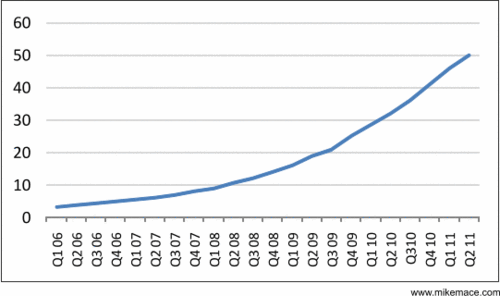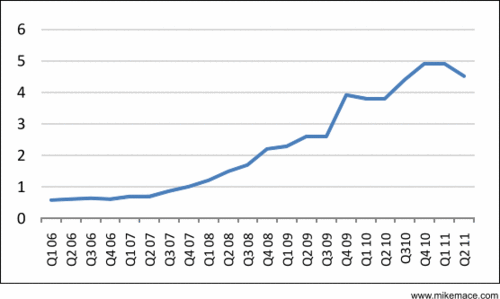Top Records of 2010
This has been a tradition since I started this blog. While I have moved all of my music blogging to my tumblog and fredwilson.fm, I've continued to do a year end roundup on this blog. I used to do a top ten and I would post every day for ten days (sometimes eleven or twelve days), but I collapsed that to one post a few years ago. I'll do that again this year. Here are the records I enjoyed the most this year:
Sir Lucious Left Foot - Big Boi – This record is so much fun. In classic Big Boi/Outkast fashion, it combines hip hop and R&B into something unique and special. It's my favorite record of the year.
Brothers - Black Keys – I think this is the best record yet from the awesome blues rock duo from Akron Ohio. It was a close runner up for record of the year.
Teen Dream – Beach House – Beach House's dreamy music held sway in our home all year long. If you check out my last.fm profile, you'll see that this record got more listens in our home than any other this year.
Gorilla Manor – Local Natives – My favorite new band of the year, this indie rock band from LA has a great sound combining cool afro guitar and excellent harmonies.
Down By The Way – Angus and Julia Stone – We discovered this brother and sister duo from Down Under late in the year, but even so, this record was the eighth most listened record all year with only about six weeks of air time. It became our standard morning music late in the year.
My Beautiful Dark Twisted Fantasy – Kanye West – @kanyewest got on twitter and got his mojo back and this record is on non stop in our family right now. This is another record that was in the top ten in listens this year with only a few weeks of air time.
The Wild Hunt – The Tallest Man On Earth – The "Swedish Bob Dylan" put out a great record that was another our morning music standbys.
This Is Happening - LCD Soundsytem – The Gotham Gal wasn't a fan and wouldn't let me play this much until she saw them live at ACL. After that, this record got more rotation. This record is pure fun, perfect for getting your energy up for a late night or anything else.
The Lady Killer – Cee Lo Green – Almost perfect soul and R&B from the current master of the genre.
The Suburbs – Arcade Fire – This was a hard choice as there were really solid records from some of our favorites this year. But on the strength of the outstanding Sprawl II, I am making this one my tenth and final top pick.
Other favorites – Come Around Sundown – KOL (Gotham Gal loves this record), Write About Love – Belle and Sebastian, High Violet – The National, Broken Bells – Broken Bells, Recovery – Eminem, Sigh No More – Mumford & Sons.
Mixtapes – All Day – Girltalk, I Am Taylor Gang – Wiz Khalifa, Vizzy Zone – XV
For the next ten days, until the end of the year, I will feature a track from one of my top ten records on fredwilson.fm and fredwilson.vc. Check them out if you want to sample some of this music.











